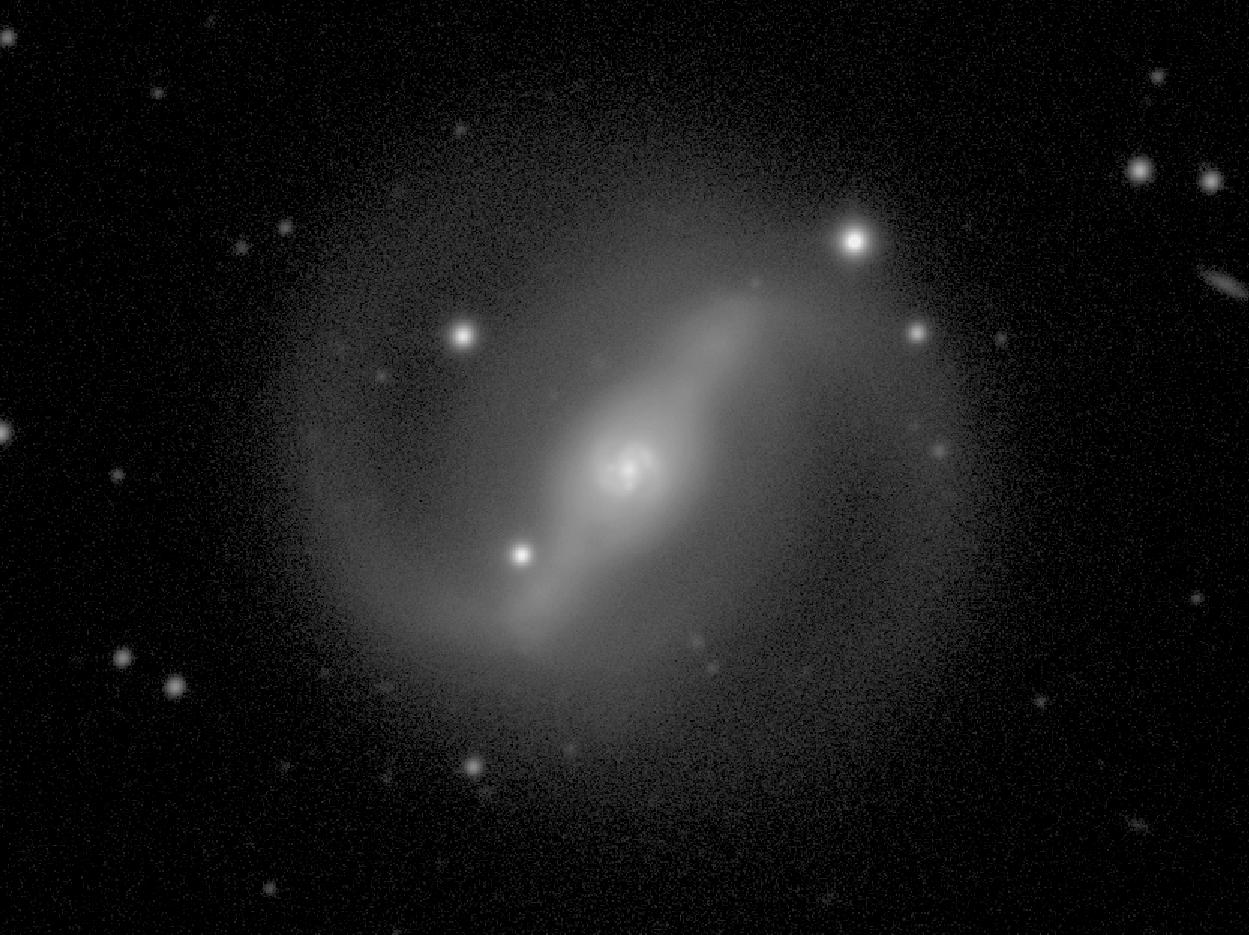

De Vaucouleurs Atlas Type: (R1')SB(r'l)a
Filter: B
Telescope: McGraw-Hill 1.3-m
North up , East left
Field Dimensions: 7.1 x 5.3 arcminutes
RC3 Type: SB(rs)a
RSA Type: SBa(rs) pec
Surface Brightness Range Displayed: 18.0-26.0 mag per square arcsec
Absolute Blue Magnitude: -18.7
Elmegreen Spiral Arm Class: AC12
De Vaucouleurs Atlas Description:
This remarkable object was already singled out as exceptional in the Hubble Atlas . The bar is very well-defined, and although the classification is clearly SBa, the bulge looks small. The Atlas image shows weak dust patches but no clear leading dust lanes in this bar. Surrounding the bar is a large, diffuse ring-lens feature. Both de Vaucouleurs and Sandage classify this feature as an inner pseudoring (rs), but there is almost no ring enhancement and the classification (r'l) provides a better description, although there is some hint that the subtle ring enhancement is made of wrapped spiral arms. Two very diffuse spiral arms break from the bar ends and form an R1' OLR subclass pseudoring. Most interesting is the structure in the center of the galaxy, consisting of a small, oval, patchy nuclear ring aligned along the bar axis, and two smoother inner arms that define a blue spiral elongated perpendicular to the bar. This feature has been the subject of many detailed studies, the most recent being an HST study by Benedict et al. (2002), who analyzed young open clusters and background stellar colors in the region. (The HST V-band image is reproduced here in Atlas units.) These authors conclude that the current epoch of star formation in the nuclear ring has probably lasted at least 30 Myr, and that the blue spiral has an age between 40 and 200 Myr. Both the spiral and the nuclear ring appear in an area where a double ILR may exist, or at least the required orbits that would exist in such a region in the weak bar approximation are present. Double nuclear ring-pseudoring features are rare, but another example is found in NGC 1317 .